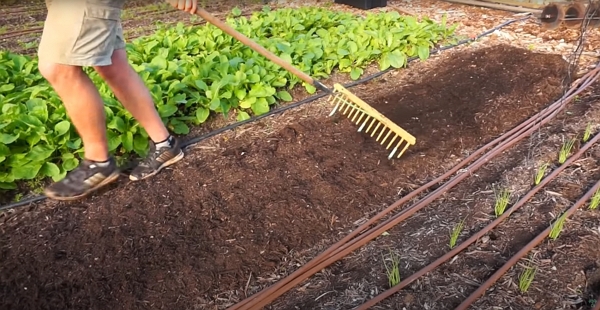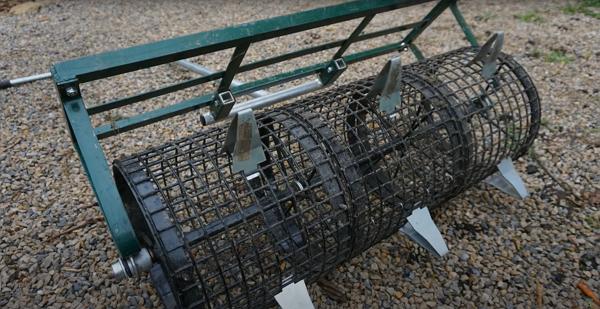April is a month when you will transplant a lot and there are steps that you can follow to make it successful.
Thanks to Moreno for sharing his wisdom and knowledge! I wrote the following notes watching the video published on The Dutch Farmer’s channel.
You can watch it using this YouTube link.
How to transplant efficiently
Prepare No Dig beds
The No Dig approach is a way to make market gardening successful because it works similarly to how nature works.
It is about:
- not digging or tilling the soil
- keeping the soil covered at all times with organic matter
Why is it an efficient approach?
- It feeds the soil web
- It keeps the weeds away
- It makes it very easy to transplant.
Tools to use
You can find a variety of tools to mark the beds:
-
a wide rake with rigid plastic tubes spaced to your needs


-
a bed roller with pikes to make holes in the soil

-
a grider

The rake is the cheaper and the grider is the most efficient tool.
Transplanting (from 5:00)
Once the beds are ready, you will need to loosen up the individual transplant without damaging them.
Then, you will simply lay at each intersection of the grid you drew earlier one transplant.
To keep your strength and health
Either:
- work on your knees
- work with your legs bent
But refrain from standing up and bending down as it will kill your back over time…
Finally, the transplanting is straight forward: since the soil is loose, you simply put 2 fingers in it to make a little hole in which to plant the transplant. Finish with ferming the soil around it.
Harvesting the winter crops
Again, always work on your knees.
Let’s take the example of turnips.
First, if the weather is warm in the early spring, then flea beetles may infect your crops. This is why neeting with a fleece can become important, especially for turnips that are a profitable crop.
The flea beetle’s attacks can decrease the photosynthesis and stress the plant resulting in a poor quality turnip.
If you sell turnips with the leaves, it could turn away the customers with damaged leaves.
So always grow turnips with a fleece cover.
Moreno uses simple elastic to bundle up 3 to 5 turnips together.
Cleaning up the yellow leaves is a good idea.
Any turnip that is too small, chicken will love the snack :)
Once the turnips are bundled, you will need to wash them and control the quality. In fact, besides the flea beetle, root maggots are another pest that can damage the root vegetables from the ground.
It makes the sale of turnips impossible when they are damaged.
In early spring, this is when the adult flies lay eggs and the larvas go into the soil to develop and eat.
What can you do without using chemicals?
Using a netting, rotating the crops and keeping your soil healthy will help to keep the turnips healthy.
And remember, even the organically approved chemicals are just as bad as conventionnal ones!





